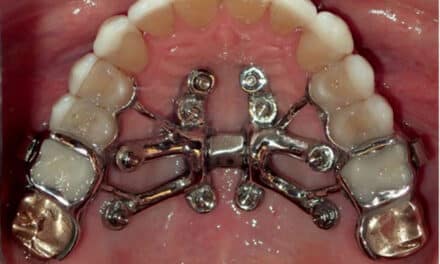.jpg)
The study evaluated the effects of Biolux LED light treatment on the stability of orthodontic miniscrews in an animal model. In this study, 60 titanium miniscrews were implanted in rabbit tibias, and then randomly divided into irradiated and nonirradiated groups. Each group was then divided into three subsets, with different forces applied to each miniscrew. Postimplant, the standard OsseoPulse™ device was used to irradiate each implant for 10 days, and implant stability was measured using resonance frequency analysis on days 0 and 21.
The results showed that all miniscrews had similar initial primary stability, and that nonirradiated control miniscrews decreased in stability postimplant. The OsseoPulse-irradiated miniscrews showed significant increase in stability levels for all three force levels, compared to day 0 stability.
“This new study demonstrates that our OsseoPulse technology can promote orthodontic miniscrew stability with a 10-day OsseoPulse treatment protocol,” said Peter Brawn, DDS, founder and chief scientific officer of Biolux. “We congratulate Dr Guray and his team on the quality of their research, and look forward to further collaborations.”









